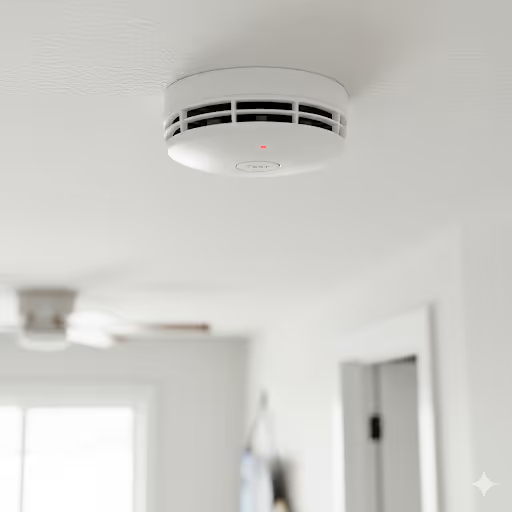
5 Questions to Ask a Firefighter: Smoke Detectors
Why Smoke Detectors Matter in Minnesota Homes
In fires, it’s not flames but smoke inhalation that kills most victims. Working smoke detectors cut the risk of dying in a house fire by half. Yet thousands of homes across Minnesota still rely on outdated, poorly placed, or dead-battery units.
1. How Many Smoke Detectors Should I Have?
- Minimum: 1 on every level of the home.
- Inside each bedroom and outside every sleeping area.
- More is better—smoke spreads unpredictably.
2. Where Should They Be Installed?
- Ceiling-mounted for best detection (smoke rises).
- At least 10 feet from cooking appliances (to avoid false alarms).
- Never install in bathrooms, garages, or near windows where airflow disrupts detection.
3. How Often Should I Test and Replace Them?
- Test monthly by pressing the button.
- Replace batteries every year (unless 10-year lithium units).
- Replace the entire unit every 10 years—even if it “looks fine.”
4. Should I Use Ionization or Photoelectric Alarms?
- Ionization: better for fast flames.
- Photoelectric: better for smoldering fires.
- Best option: dual-sensor alarms that cover both.
5. Should They Be Interconnected?
- Absolutely. If one alarm goes off, they all should.
- Hardwired with battery backup is ideal, but wireless interconnect models are now affordable and easy to install.
Final Word
Smoke detectors are your home’s first line of defense. Lakeside Restoration has seen tragedies avoided simply because a $20 alarm was installed correctly. Take the time today to review yours—and if fire ever does break out, we’ll be there to restore what matters most.

Contact Us
Contact Us Today for a Free Inspection
Get in touch today! Call us or book a time online for your free inspection!



.avif)
.avif)

